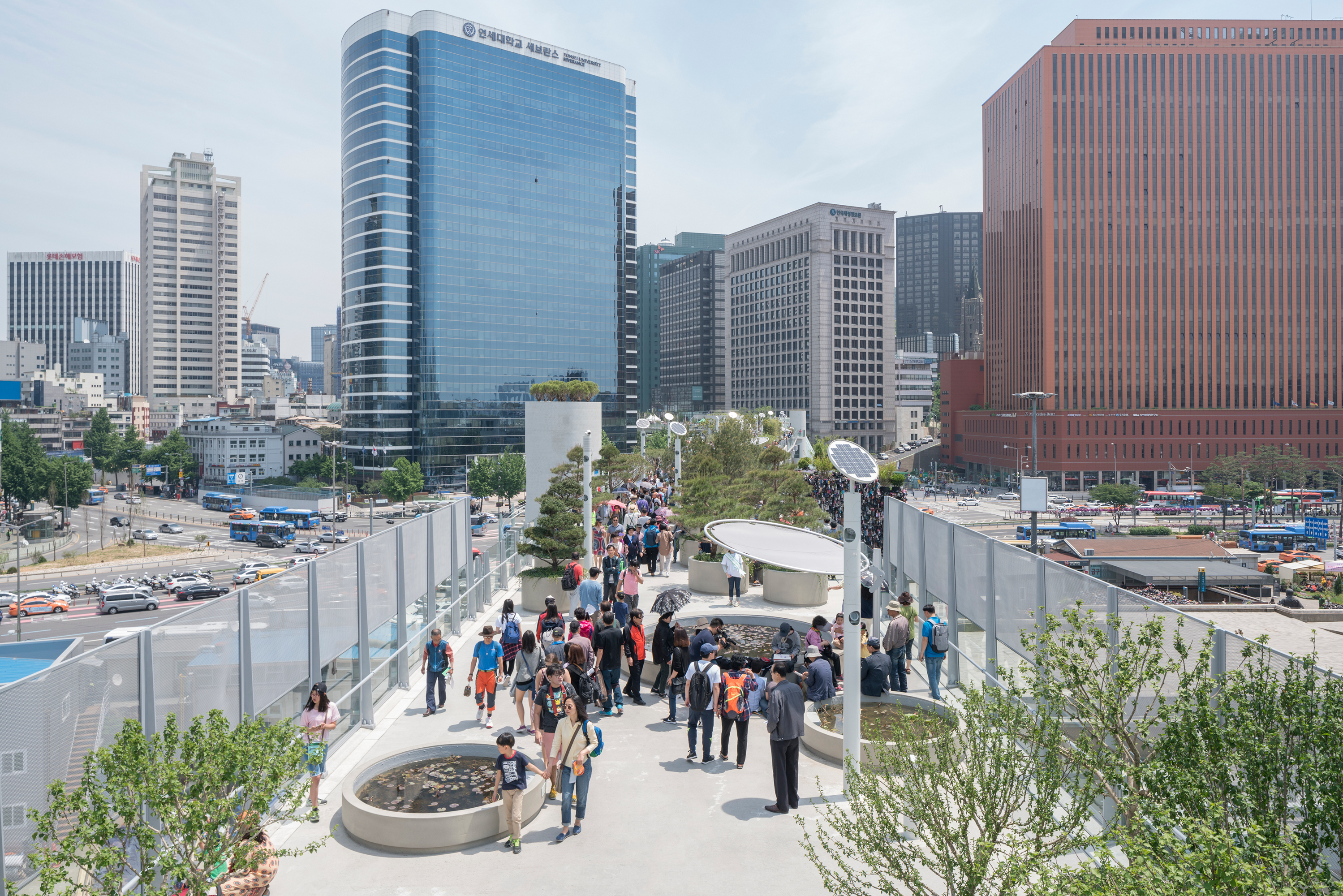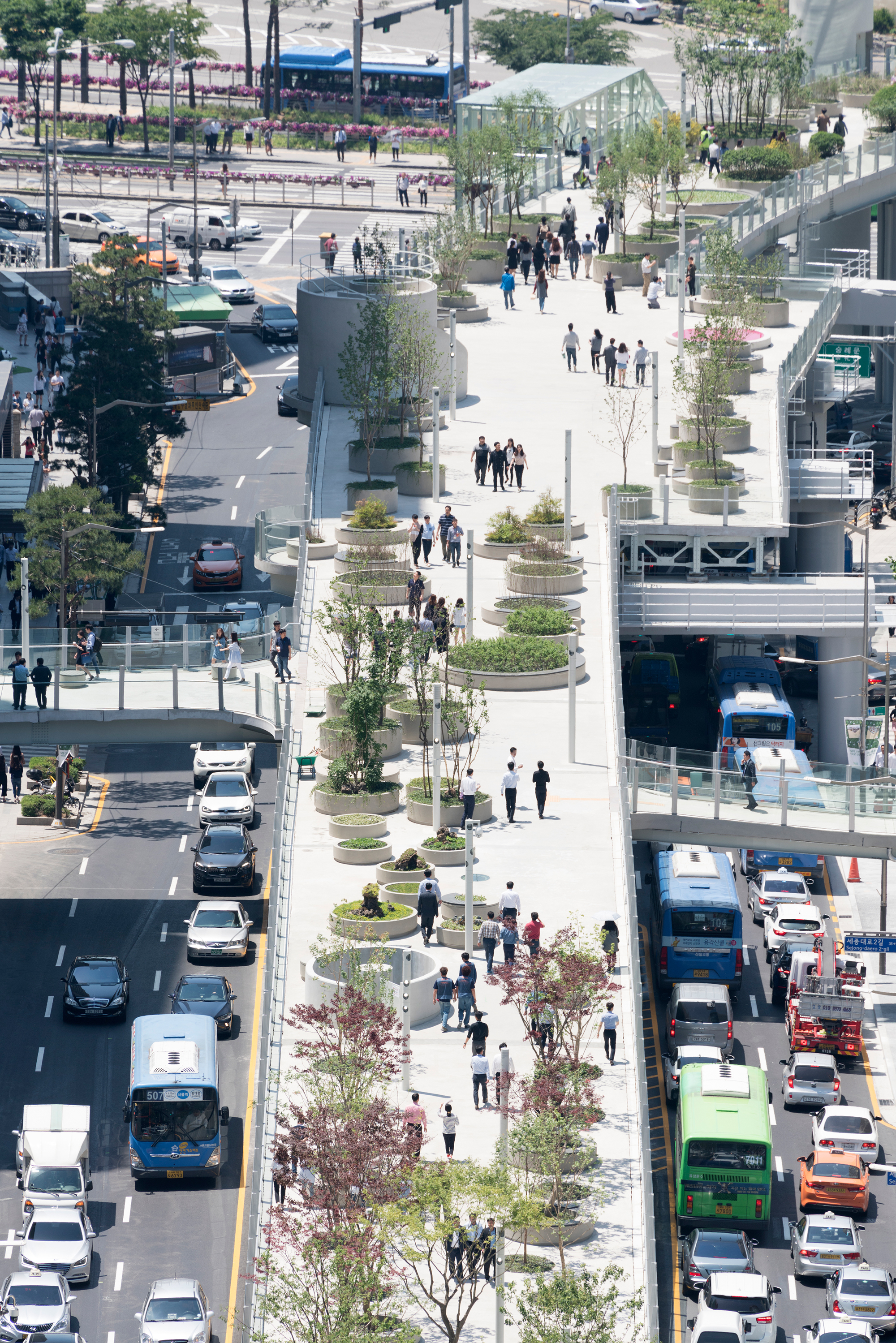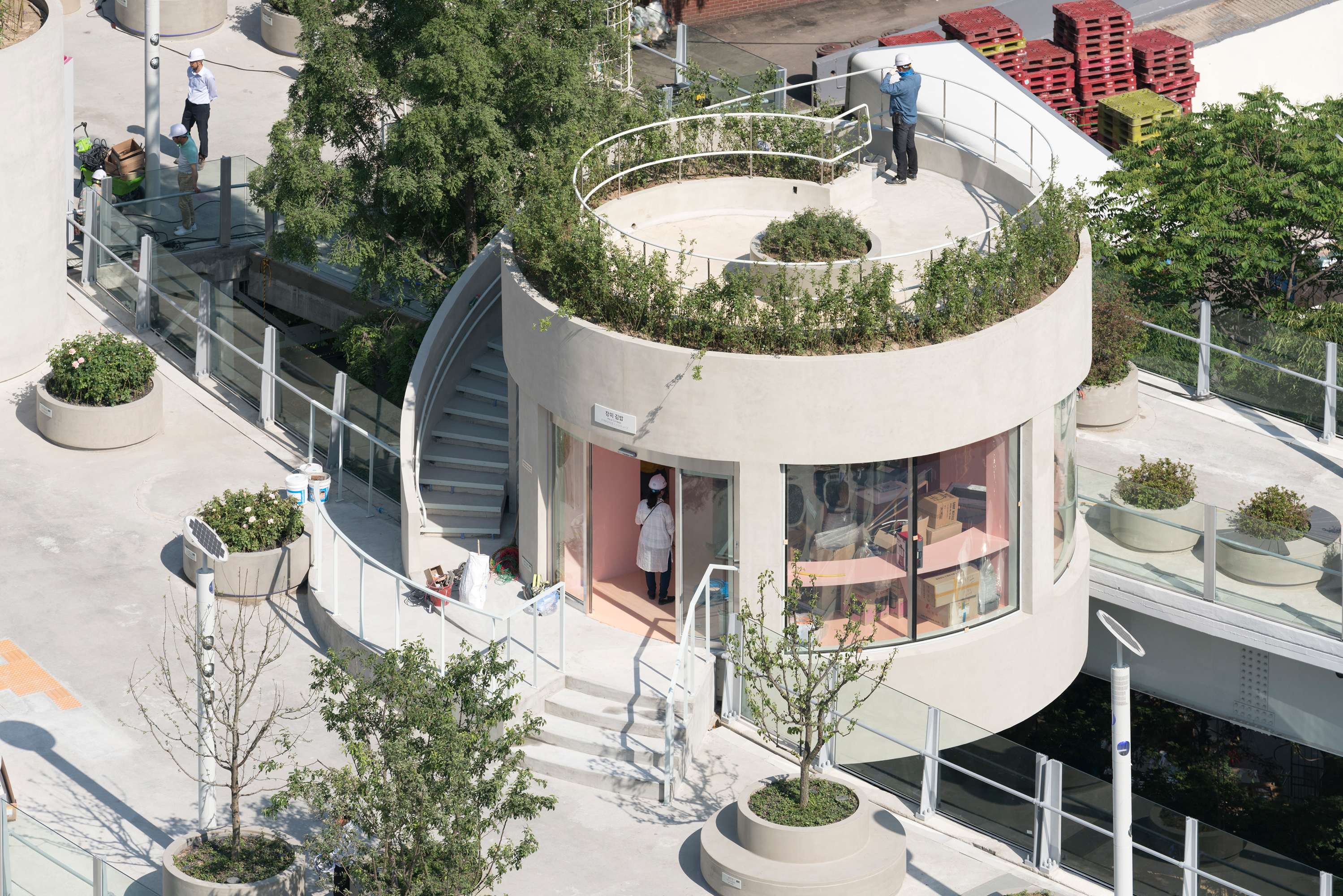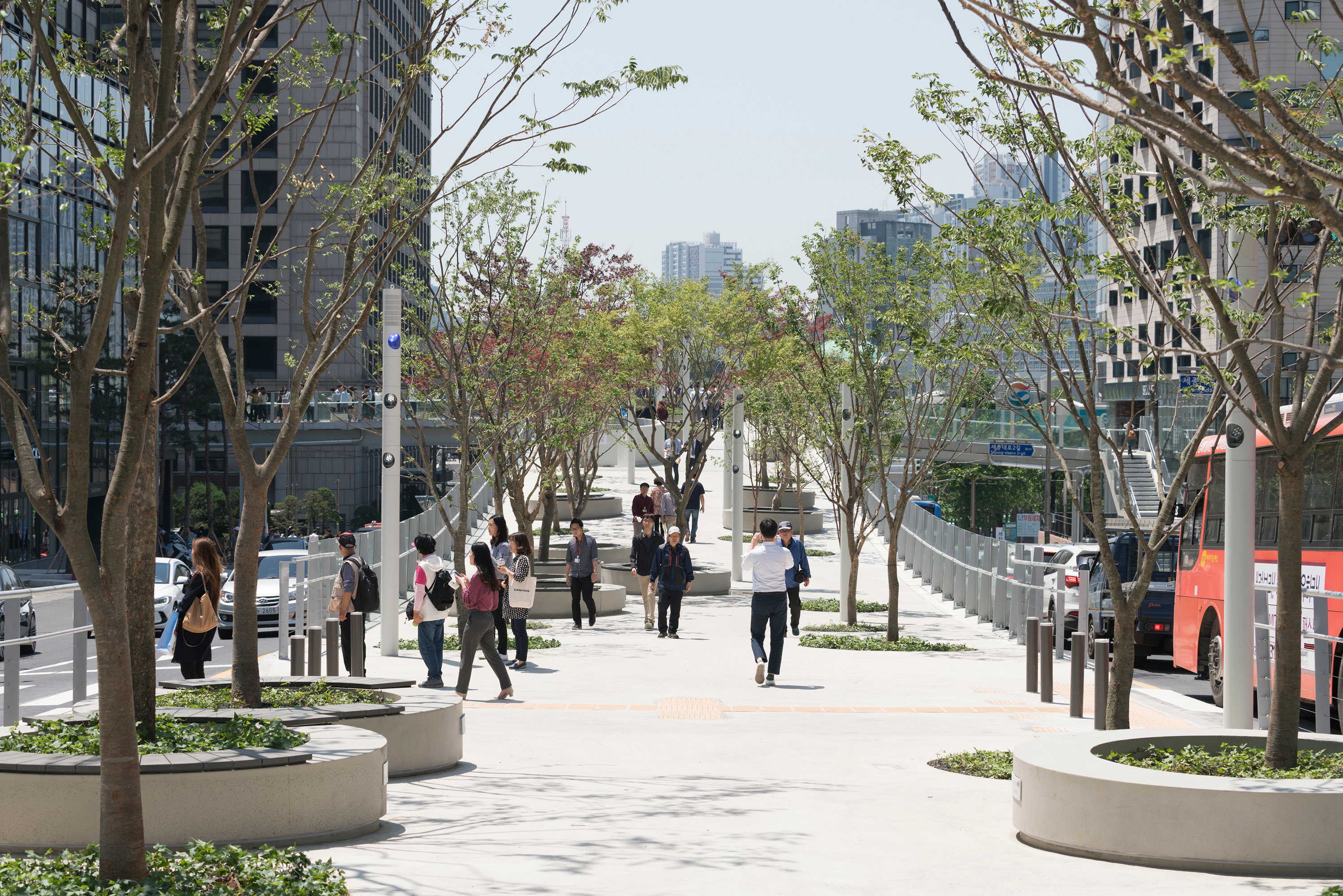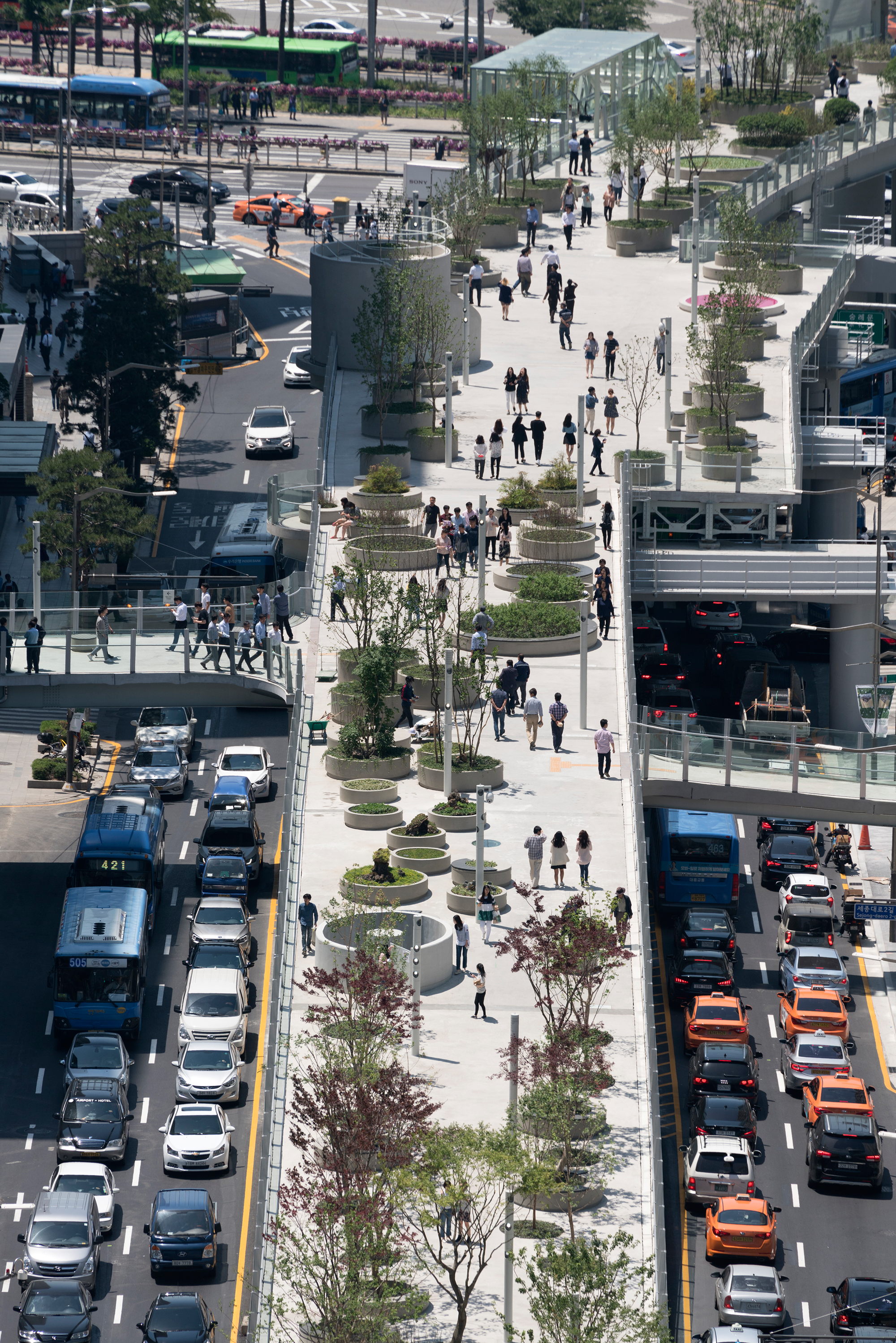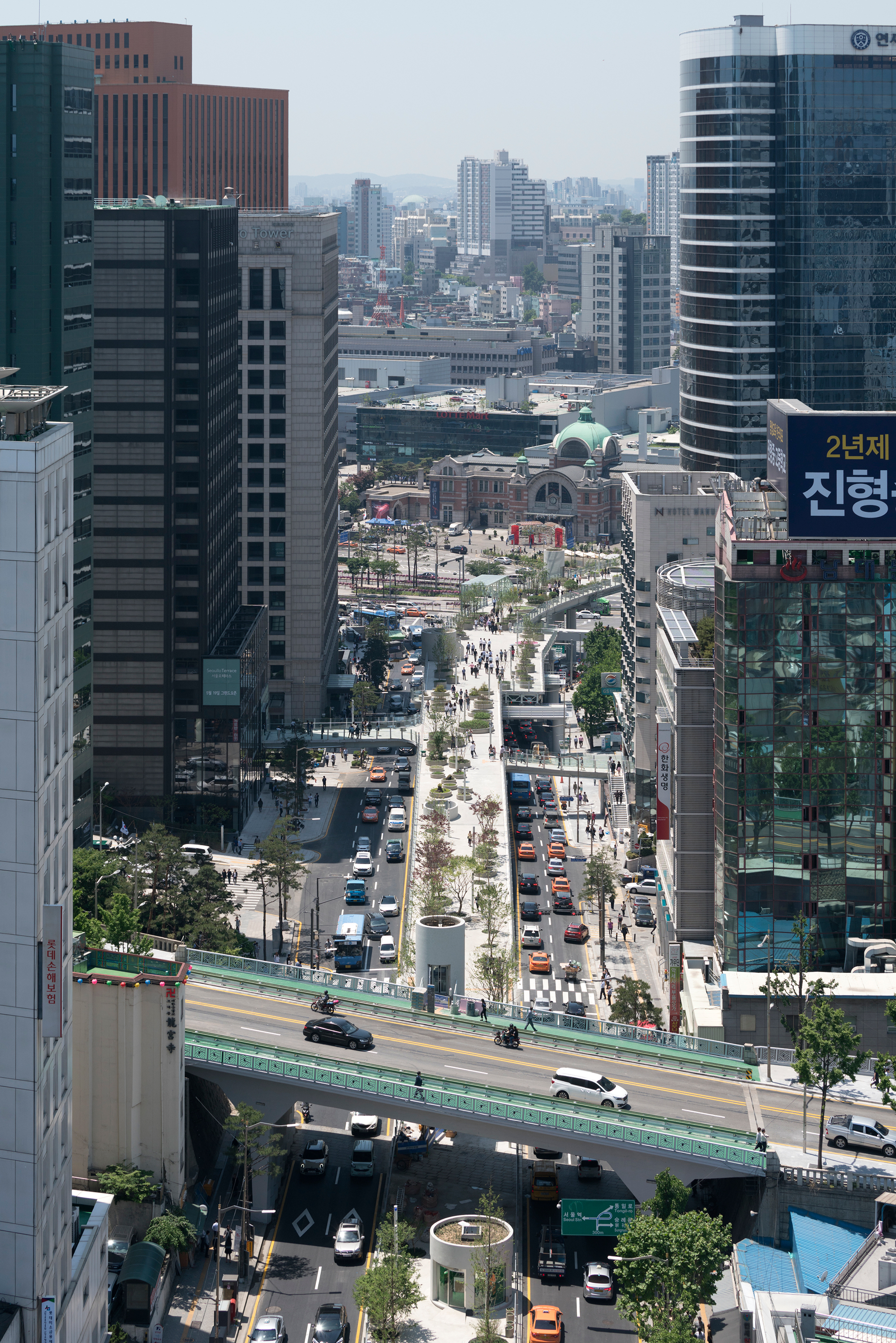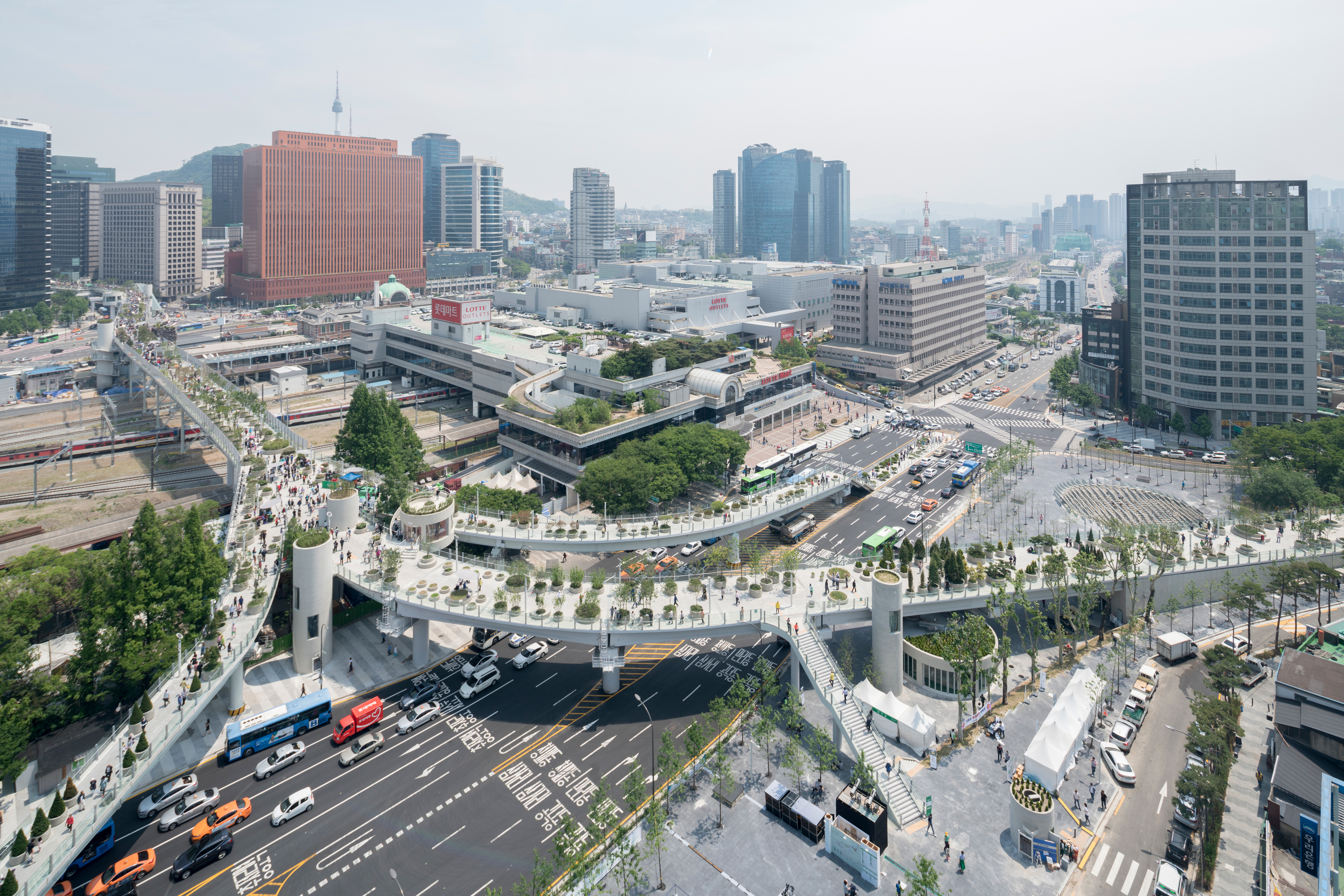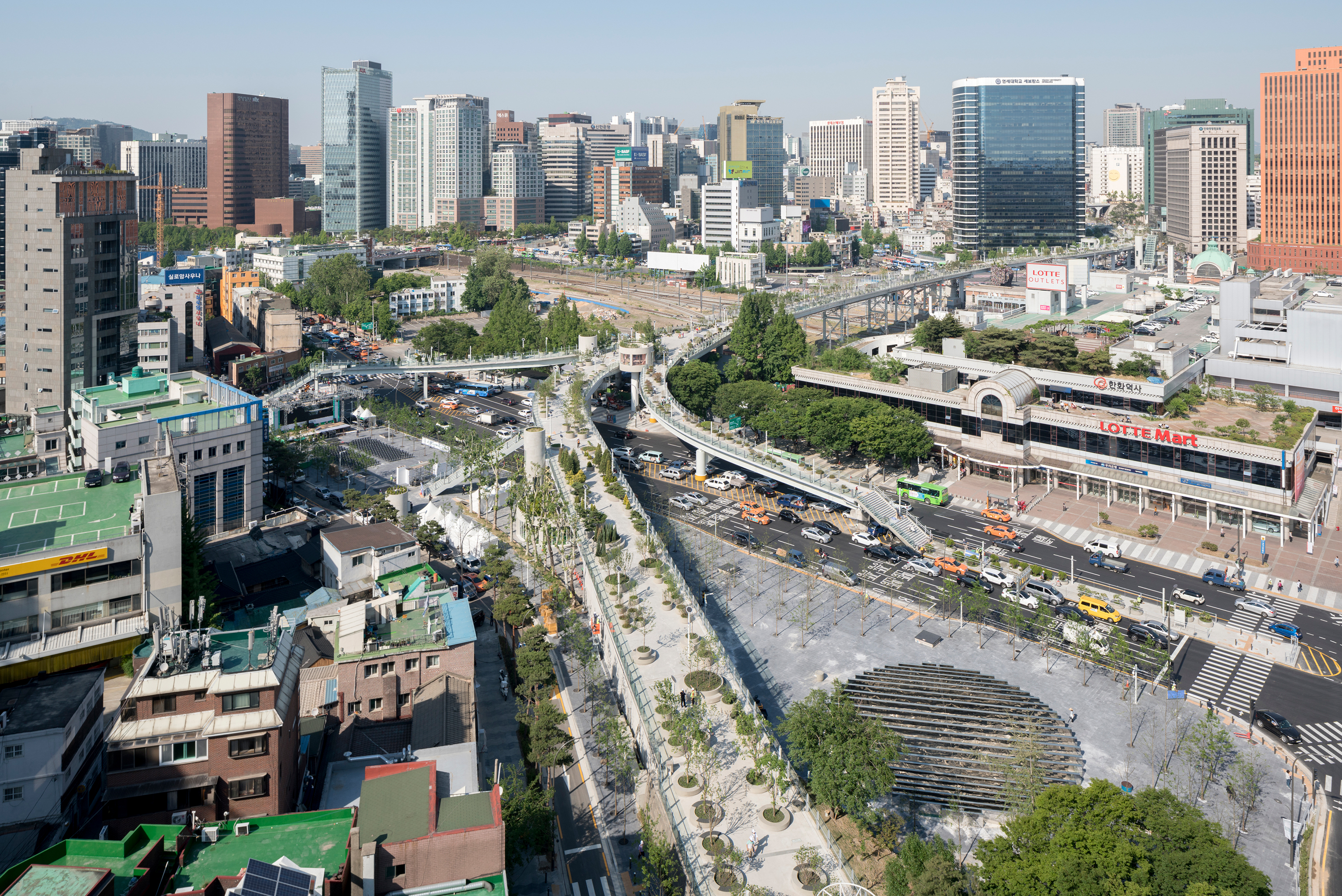When a road becomes a park: Seoullo 7017 by MVRDV

Photo: © Ossip van Duivenbode
The urban area at the heart of Seoul has gained a 983-metre-long public green space, where over 50 plant species – trees, shrubs and flowers – await to be discovered. Remarkably enough, the new civic garden offering a broad variety of Korean plant species was an inner-city expressway until fairly recently. Now it has been provided some 24,000 individual plants, many of which will first be reaching their full height in a number of years. The name of the 'hanging garden' is made up of the word Seoullo, which is Korean for 'Skygarden', and the mysterious-looking number 7017 – with '70' referring to 1970, the year in which the expressway was built, and '17' to 2017, the year that saw the re-opening of the highway in its new guise of public open space.
Located close to Seoul's main railway station, the car-free overpass is part of the Korean capital's urban programme for a friendlier and more attractive city – an undertaking that is to be achieved with the help of a large number of green spaces and walkways.
When MVRDV won the competition for the design of the new park in 2015, the greatest challenge was to find a way of transforming the reinforced concrete structure into a 'matrix' of typical Korean plants. At the same time the effect of such an infrastructural intervention on the everyday lives of thousands of people had to be taken into consideration.
The linear park consists of several smaller gardens, each with an identity of their own and featuring vegetation that changes with the seasons: vibrantly-coloured maple foliage predominates in autumn and the pink of cherry tree blossom in spring, while ever-green conifers gladden the eye in winter and fruit growing on bushes and trees in summer. New bridges and stairways form links at various places between the new green space and the city. Further public open spaces are to be created in future and connected to the existing structure by means of stepways and elevators.
The idea behind the renaturation of Seoul undoubtedly has several objectives. More liveable surroundings are to be created on the one hand in the city, which today is home to about half of the South Korean population. On the other hand, the young state that was not liberated from Japanese rule until after the Second World War is striving to regain an identity of its own – among other things with the help of an artificially established landscape.
Located close to Seoul's main railway station, the car-free overpass is part of the Korean capital's urban programme for a friendlier and more attractive city – an undertaking that is to be achieved with the help of a large number of green spaces and walkways.
When MVRDV won the competition for the design of the new park in 2015, the greatest challenge was to find a way of transforming the reinforced concrete structure into a 'matrix' of typical Korean plants. At the same time the effect of such an infrastructural intervention on the everyday lives of thousands of people had to be taken into consideration.
The linear park consists of several smaller gardens, each with an identity of their own and featuring vegetation that changes with the seasons: vibrantly-coloured maple foliage predominates in autumn and the pink of cherry tree blossom in spring, while ever-green conifers gladden the eye in winter and fruit growing on bushes and trees in summer. New bridges and stairways form links at various places between the new green space and the city. Further public open spaces are to be created in future and connected to the existing structure by means of stepways and elevators.
The idea behind the renaturation of Seoul undoubtedly has several objectives. More liveable surroundings are to be created on the one hand in the city, which today is home to about half of the South Korean population. On the other hand, the young state that was not liberated from Japanese rule until after the Second World War is striving to regain an identity of its own – among other things with the help of an artificially established landscape.


